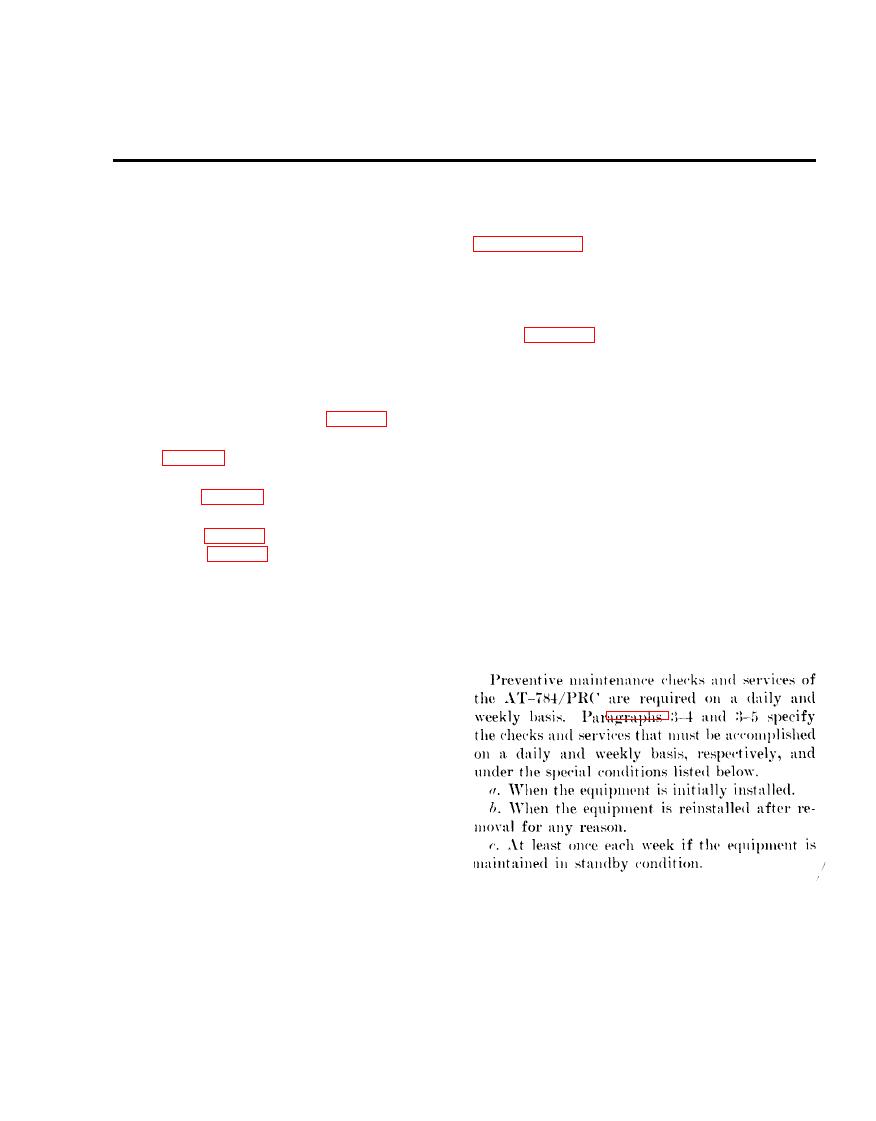
TM 11-5985-284-15
OPERATOR'S AND ORGANIZATIONAL MAINTENANCE INSTRUCTIONS
Section I. OPERATOR'S MAINTENANCE
a. Systematic Care. The procedures given in
The maintenance duties assigned to the operator
and cleaning essential to proper upkeep and
of Antenna, Loop AT-784/PRC, are listed below,
operation of the equipment.
together with references to the paragraphs cover-
b. Preventive Maintenance Checks and Services.
ing the specific maintenance functions. The duties
The preventive maintenance checks and services
assigned do not require tools or test equipment,
charts (paras 3-4 and 3-5) outline functions to be
but two radio sets (AN/PRC-25, or equivalent)
performed at specific intervals. These checks and
are required for operational checkout: One for
services are to maintain Army electronic equip-
transmitting purpose and one for receiving AT-
ment in a combat serviceable condition; that, is, in
1082/PRC outputs.
good general (physical) condition and in good
operating condition. To assist operators in main-
b. Preventive maintenance checks and service
taining combat serviceability, the charts indicate
periods (para 3-2).
what to check, how to check, and what the normal
conditions are; the References column lists the
c. Daily preventive maintenance checks and
services chart (para 3-4).
illustrations, paragraphs, or manuals that contain
detailed repair or replacement. procedures. If the
d. Weekly preventive maintenance checks and
defect cannot be remedied by the operator, higher
services chart ( para 3-5).
category maintenance or repair is required.
Records and reports of these checks and services
must be made in accordance with the requirements
set forth in TM 38-750.
Preventive maintenance is the systematic care,
servicing, and inspection of equipment to prevent
the occurrence of trouble, to reduce downtime, and
Service Periods
to make sure that, Antenna, Loop AT-784/PRC, is
in a combat serviceable condition at all times.
Because of moisture and fungus growth, the main-
tenance of this antenna in tropical climates is more
difficult than under temperate climatic conditions.
The high relative humidity causes condensation
to form on the equipment; this is especially true
when temperature of the equipment becomes lower
than the surrounding air. To minimize this con-
dition, keep this type of antenna sheltered and off
the ground as much as possible.



 Previous Page
Previous Page
